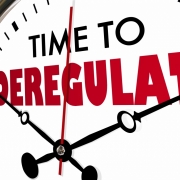Hours before lawmakers voted on a multi-trillion dollar government funding package that included a $900 billion COVID-19 relief bill, congressional aides were spotted wheeling in the legislation.
It ran 5,593 pages.
“You’d have to read 560 pages an hour to finish it before midnight,” observed NBC News correspondent Garrett Haake.
Lawmakers did not wait until midnight to pass the legislation, however.
“The Senate passed the massive year-end legislation combining $900 billion in pandemic relief with $1.4 trillion to fund federal agencies through fiscal 2021,” Bloomberg reported. “The House passed the legislation earlier Monday night. The total bill is worth more than $2.3 trillion, including support for small businesses impacted by the pandemic, $600 payments for most individuals, supplemental unemployment insurance, regular funding for federal agencies and a bevy of tax breaks for companies.”
So how did lawmakers read 560 pages an hour before voting on the bill? The answer is simple: they didn’t. In fact, there was a great deal of confusion—in both media and Congress—on what precisely lawmakers were voting on. (More on that later.)
Naturally, perhaps, there was some bipartisan anger over the process.
“Congress is expected to vote on the second largest bill in US history today,” tweeted Rep. Alexandria Ocasio-Cortez (D-NY), “as of about 1pm, members don’t even have the legislative text of it yet.”
Despite her reservations, Ocasio-Cortez voted in favor of the bill. Others held out, however.
“No member can honestly say they know exactly what they voted for this evening,” said Rep. Paul Gosar (R-AZ), who voted against the legislation. “That is reason alone to vote no.”
Gosar was right. FEE’s covered at length on Monday many of the provisions contained in the COVID-19 relief bill, highlighting its many glaring problems. But because of its massive length, we still don’t know everything in the package—which is several bills tied into one.
As Yahoo Finance reports, some of the lesser-known provisions “have raised some eyebrows.”
“Among them are a pair of assistance programs in Pakistan, whereby $15 million will be put toward “democracy programs” and $10 million will be distributed to ‘gender programs,’” reports Fox News correspondent Brittany De Lea.
You read that correctly. But technically this provision—and other defense measures such as $73 million in spending for Israel’s Iron Dome 9 defense system —is not part of the COVID relief package. It’s part of the defense bill contained in the $1.4 trillion omnibus that was bound up with the COVID relief bill.
This is a slap in the face to Americans. During a year in which tens of millions of Americans were forced out of work and hundreds of thousands of businesses were destroyed, lawmakers could not even offer a clean relief bill.
At the risk of stating the obvious, many believe a relief bill passed during a deadly pandemic should focus on relief for individuals and businesses adversely impacted by the pandemic.
So naturally, many on Twitter did not react positively to the revelation that the COVID relief bill and the omnibus were, in a sense, mixed together.
People are right to see that tying COVID relief to defense provisions is, well, stupid. But there’s a phenomenon that helps explain why this happens. It’s called logrolling.
Logrolling is essentially the trading of favors among legislators for mutual benefit. Bills often get passed by winning the support of lawmakers by including provisions that benefit their special interests, but which may not align with any public good. As a result, successful legislation tends to be chock full of special-interest spending.
This trap is highlighted by “public choice” economics, which assumes that politicians vote to forward their own interests just like everyone else. In this case, however, they impose costs on the country in exchange for a big benefit to a special interest group who supports them.
If you’re wondering how a vote for COVID relief for Americans becomes tied to $10 million for gender programs in Pakistan and hundreds of millions of dollars in defense for another country, look to the incentives lurking within government institutions.






